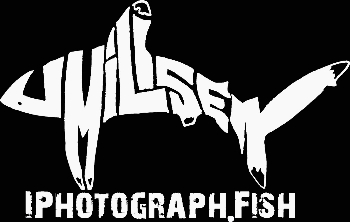Oahu Sand Flats
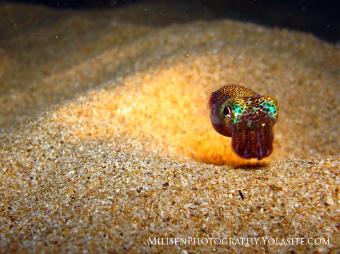
There are large expanses of sand flats that extend out from Oahu along all shores of the island. Most divers overlook areas like this because it reminds them of terrestrial deserts known for being nearly devoid of life. A shell collector and personal friend piqued my curiosity by relating an experience he had while diving one such area.
The story goes that he was minding his own business one night collecting certain shells that inhabit such a sandy environment for trade/sale later. His dive lights often glinted off the eyes of hammerheads cruising the distance, so he thought nothing of another set of eyes this particular night. Perhaps it was the sand he was kicking up or maybe some noise he was making, but this shark snapped and ran in for a charge, ramming the collector multiple times in the chest. As soon as he found a chance, the collector grabbed his things and ascended suffering only a few bruised ribs from the encounter.
I wasn’t really keen on getting rammed by a large shark, but there were a few facts here that intrigued me. The close proximity, remoteness of site and number of animals were all exciting aspects of the story. Even more importantly, you may remember from the intro that hammerheads are nocturnal feeders, a fact which makes them very difficult to tag. Previous tagging studies conducted at aggregating sites in Baja Mexico and elsewhere relied on freedivers with pole-tags to implant the free-swimming animals during the day. Hawaii doesn’t have any known aggregation sites, which is why very few hammerheads have been tagged here. Because they are nocturnal, hammerheads don’t respond to chum or baited lines during the day, a behavior that theoretically changes when feeding. All currently known feeding areas are many miles out at sea and difficult to access even by boat.
The plan was to leave the anchor tines retracted and just carry it as we drifted along the sandy plain to cover as much ground as possible. The first thing we noticed was the bioluminescence that lit up every object around us. As we hit the bottom, we were greeted with seemingly infinite stretches of sand in every direction. Nervously, we shined our lights around. In addition to the rumored hammerheads, we stayed vigilant for the larger customers, namely tiger sharks, which are known to frequent this area as well. We were thus both disappointed and relieved when we didn’t see any eyes reflecting our lights back at us. Then Andrew noticed something in the distance.
His light pointed at the sand where a very strange black and white nudibranch vacuumed the benthos. The mollusk was roughly the size of one’s hand. As he pointed the dive-torch, copepods gathered and the sea slug reared up, feeding on the tiny crustaceans. Neither of us had seen such a thing before. We would later learn that the critter was called Euselenops luniceps and others like it commonly dotted the environment before us. On subsequent dives, this would become the staple organisms to keep us entertained when others failed to show. Our attention drifted away from the distant, sharkless blackness and turned to the really cool, small stuff crawling out of the sand.
We quickly started spotting all sorts of animals neither of us had seen before. I can’t mention this spot without mentioning the groups of Hawaiian bobtailed squid (Euprymna scolopes) that occasionally dotted the sand. We soon stumbled across a nudibranch called Kalinga ornata has been mostly documented from deep-sea subs with only a few sightings within recreational scuba depths. A starfish, later identified only down to the genus Astropectin, crawled strangely along the sand. Finally, we came across a very rare, living Semicassis umbilicatum, a small helmet shell that can fetch a hefty price on the shell collecting market (don’t worry, we took only its picture). The amount of stuff that crawled out of the sand was just staggering.
We returned six times that season and, for logistical reasons, haven’t made it back since.
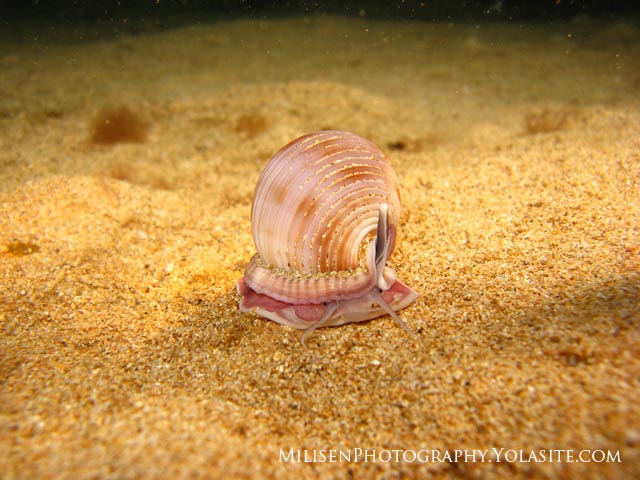
Semicassis unbilicatum
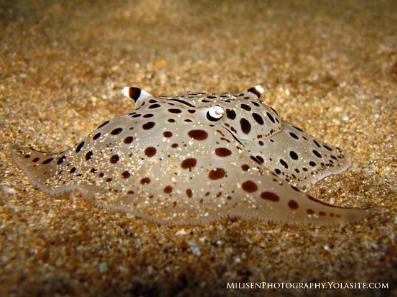
Euselenops luniceps

Euprymna scolopes-Hawaiian bobtailed squid
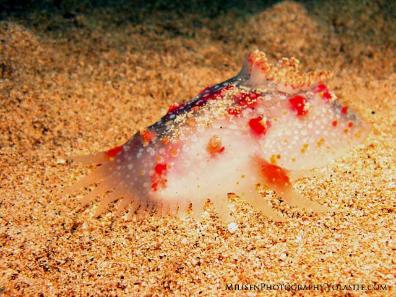
Kalinga ornata
